 |
|
Kansas Geological Survey Open-file Report 2003-27 |
Lithofacies Classifications
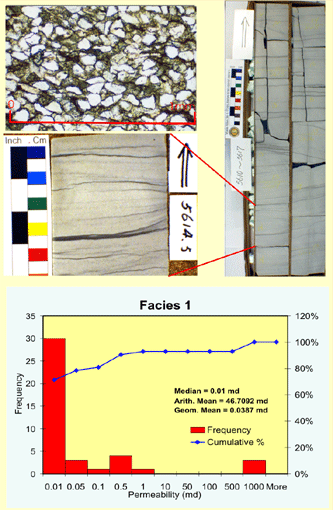 |
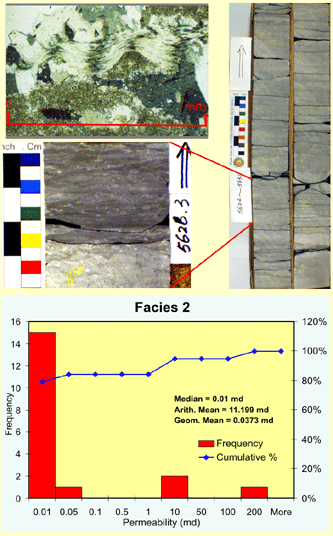 |
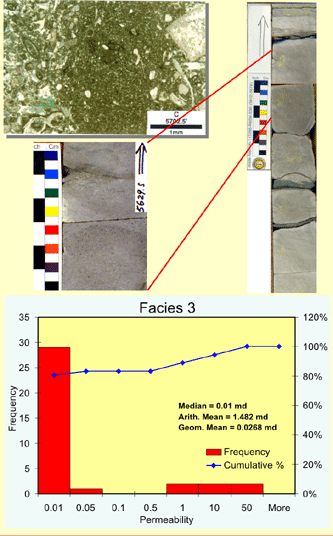 |
|
Cross-bedded Quartz-rich Mixed siliciclastic and carbonate grainstone contains very fine quartz (up to 40 ~ 50 percent) and medium grained peloids, skeletal fragments, ooids with micrite and calcite spar cement. Compactional effects, broken ooids, oriented grains, calcite-filled fractures and minor dissolution of grains are evident. Inverse translatent stratification, stylolites, are common. Occasional root structures are observed. Angles of cross bedding most commonly are in the 10 to 20 degree range. Permeability is less than 1md, most <0.01md. Non-reservoir facies. |
Argillaceous Limestone Thin, laterally extensive condensed section, characterized by thinly beded, often fissile olive green to gray argillaceous limestones which is primarily wackestone /packstone with abundant bryozoans and crinoids and minor brachiopods and ostracods. Occasionally contains small amount of very fine to medium detrital quartz. On electronic logs, it shows a distinctively higher gamma-ray response. Non-reservoir facies.
|
Skeletal Wackestone Very poorly sorted, and greenish to dark yellowish-brown in color with large, relatively un-abraided skeletal fragments. Crinoids and fenestrate bryozoans are the most abundant skeletal fragments, with echinoderms, brachiopods, gastropods and foraminifera also present. Porosity averages lass than one percent, with permeability of 0.01 md. Non-reservoir facies. |
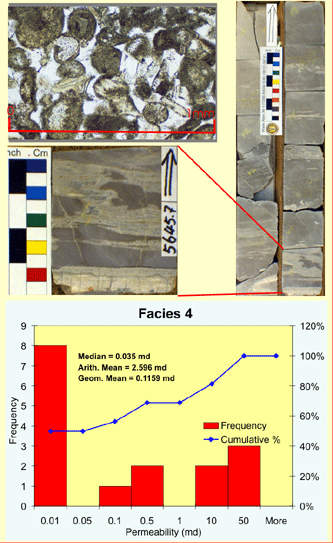 |
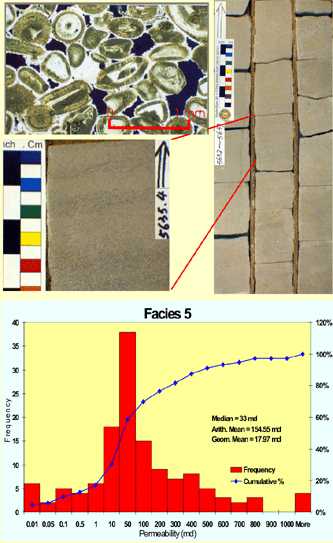 |
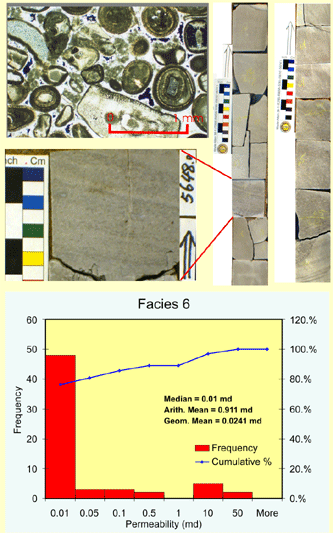 |
Peloidal Grainstone/Packstone This Lithofacies deposited in back barrier lagoon or tidal flat and composed of very fine peloidal grains, with some very fine quartz, and fine ooid grains present. The fenestral limestone is characterized by “bird’s-eye” or fenestral fabric (indicator of intertidal to supratidal deposition). Large vugs, filled with anhydrite or chert or calcite spar, can be seen. Typically occurs adjacent to the ooid-skeletal grainstone facies. Sometimes, mud cracks can be observed at the top of the sequence. Non-reservoir facies. |
Ooid Skeletal Grainstone This lithofacies is the reservoir unit and is characterized by very coarse to medium size moderately sorted ooids. The ooids have a radial concentric structure and are usually unbroken. Large skeletal grains, peloids present. Main porosity is interparticle porosity with minor moldic porosity. Total porosity can vary from 3 percent to as high as 20 percent. Distinctive log response with higher porosity and lower resistivity. Accumulates in a high-energy, open-marine environment. Reservoir facies. |
Cemented Ooid Skeletal Grainstone Composed of very coarse to medium size and moderately sorted ooids. The ooids have a radial concentric structure and are usually unbroken. Large skeletal grains and peloids are present. Heavy syntaxial cementation occludes interparticle voids. Porosity and permeability are very poor. Non-reservoir facies. |
|
|
e-mail : webadmin@kgs.ku.edu
Last updated May 2003
http://www.kgs.ku.edu/PRS/publication/2003/ofr2003-27/P2-01.html